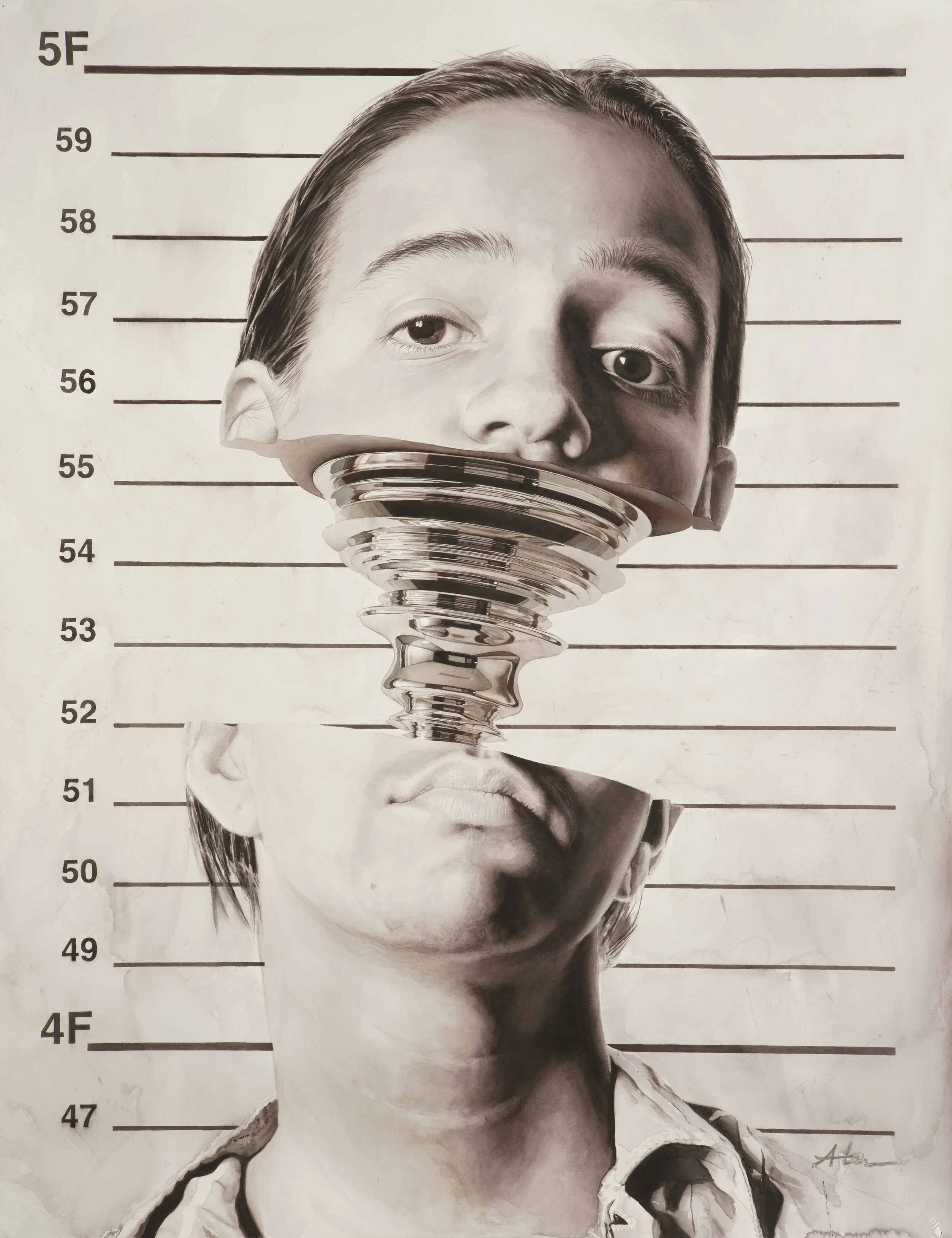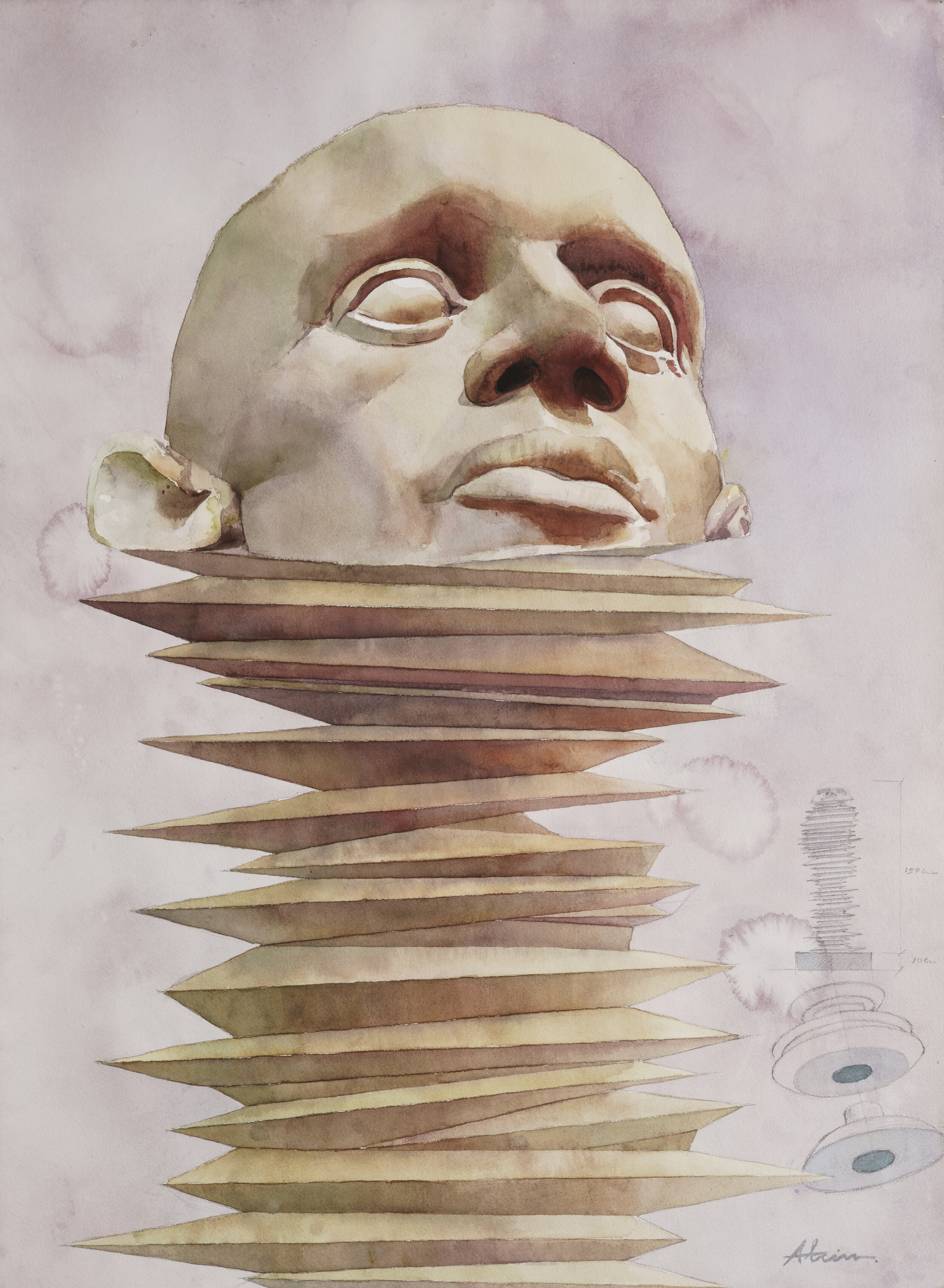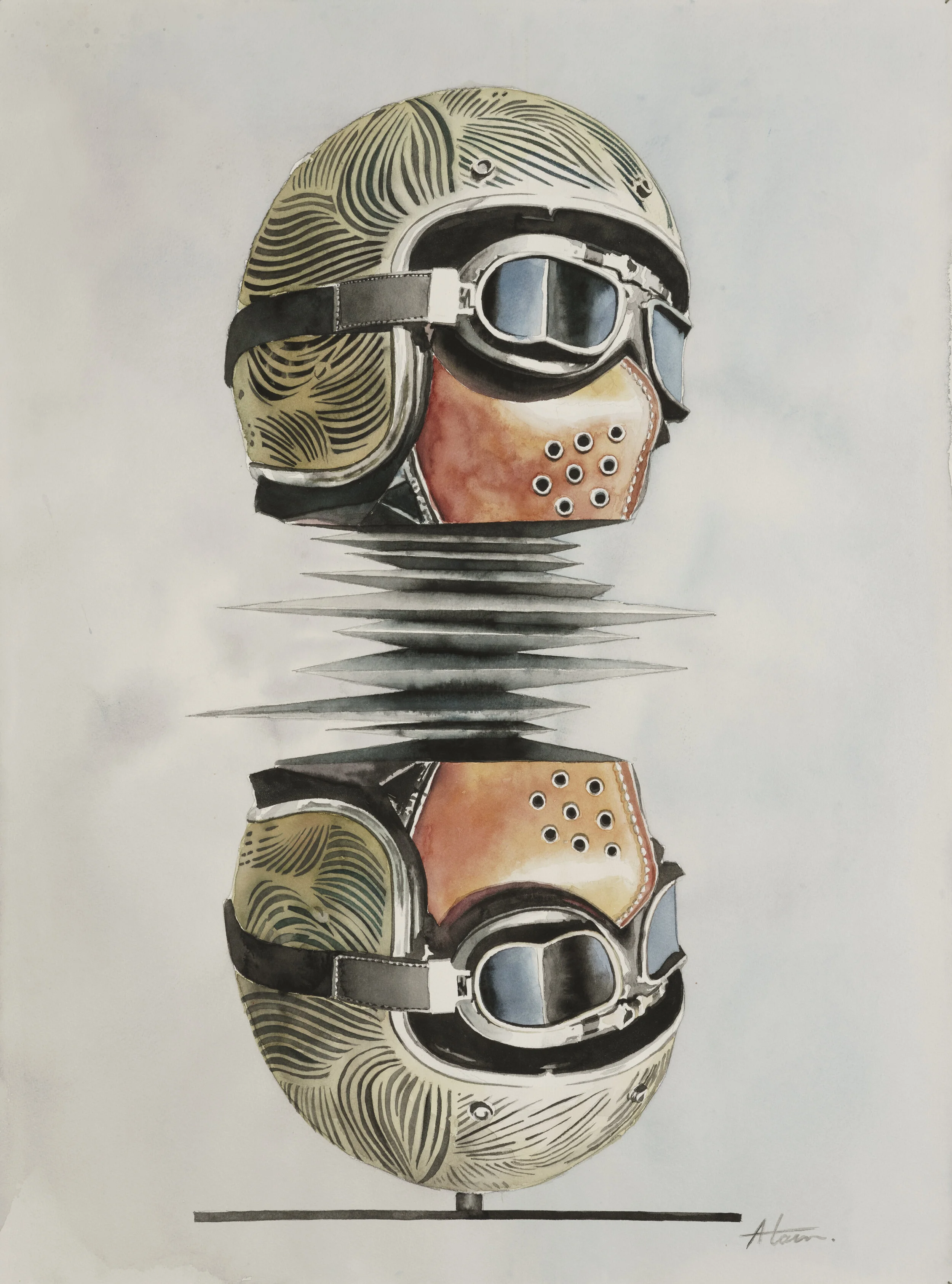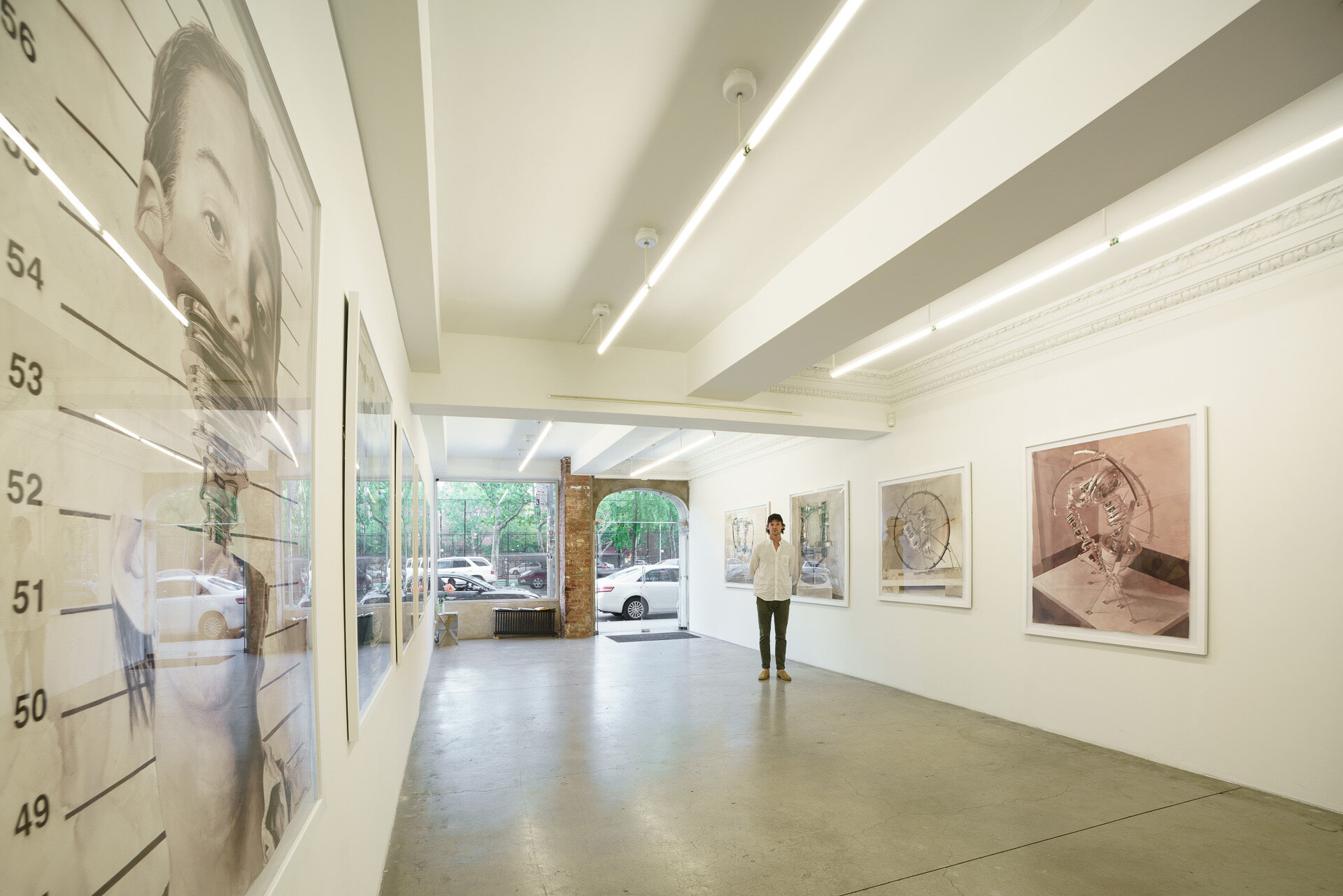
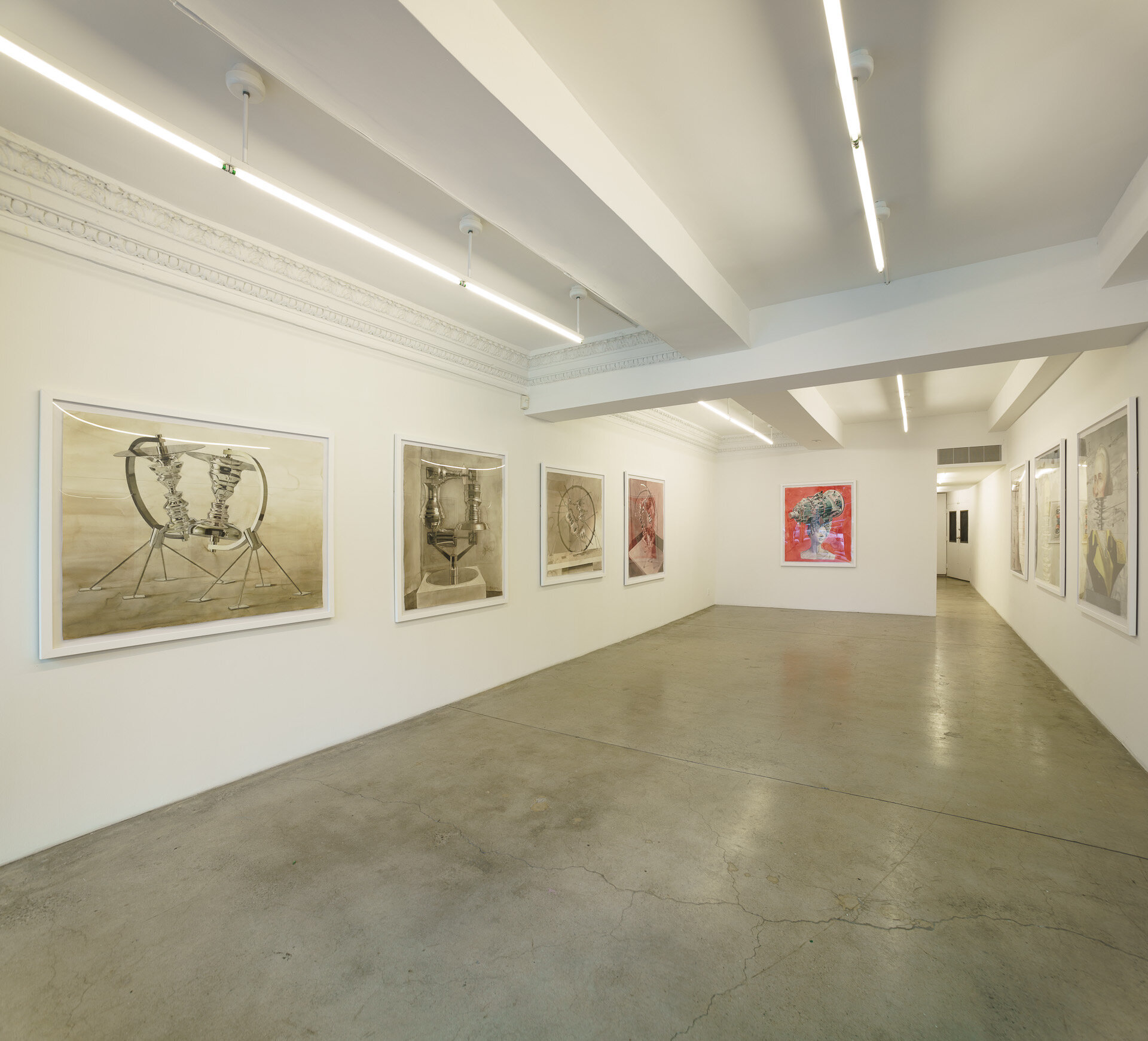

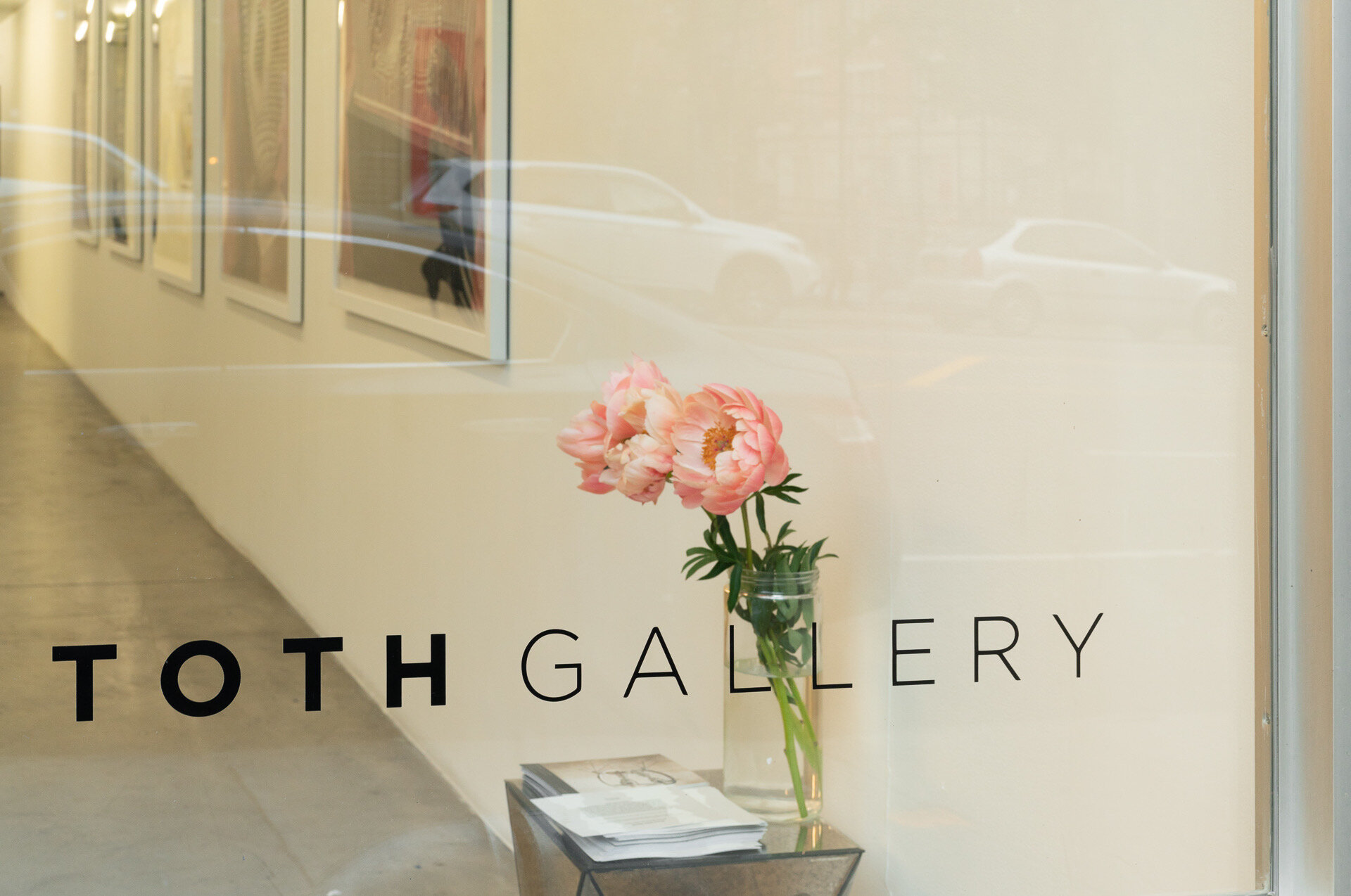
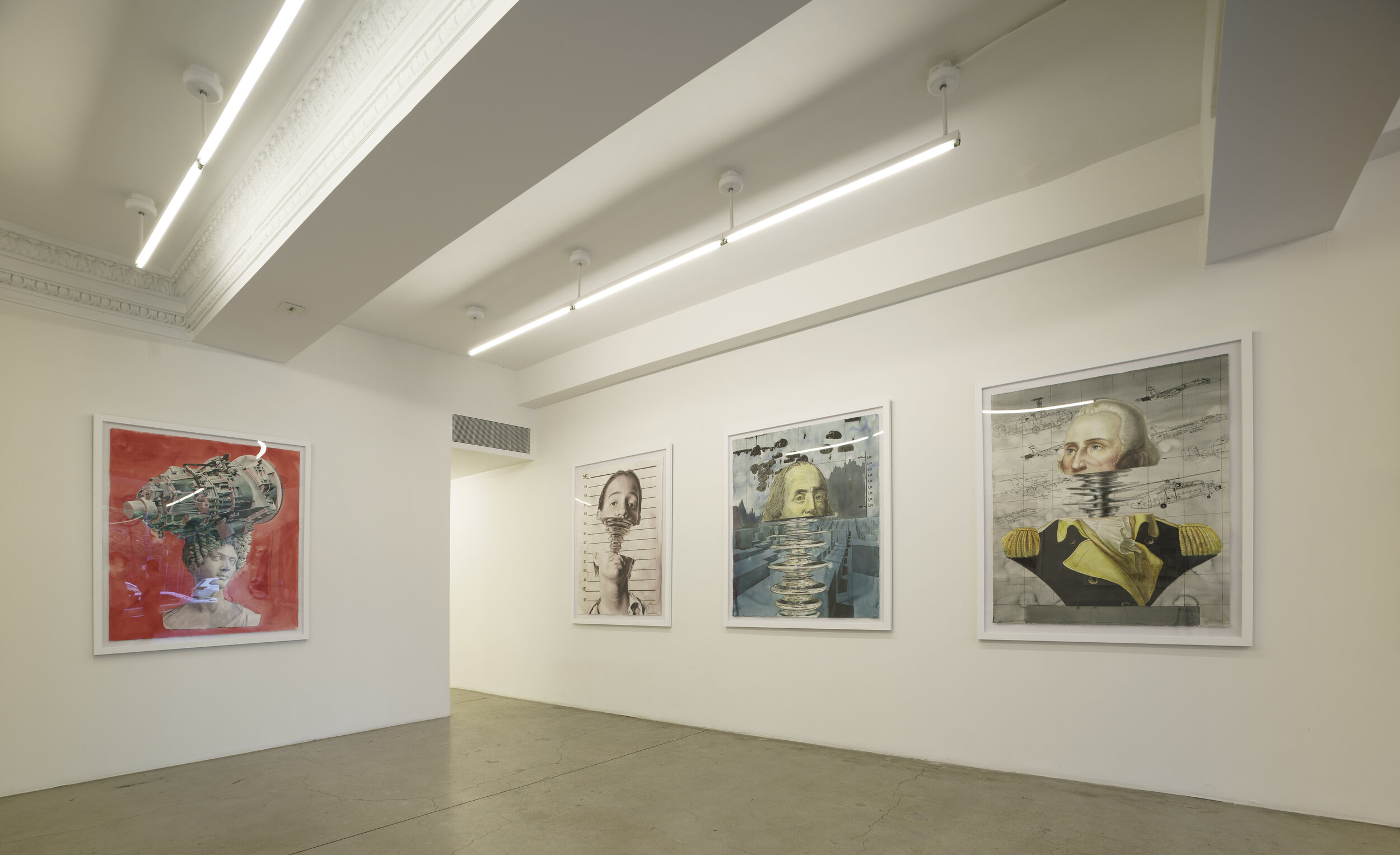
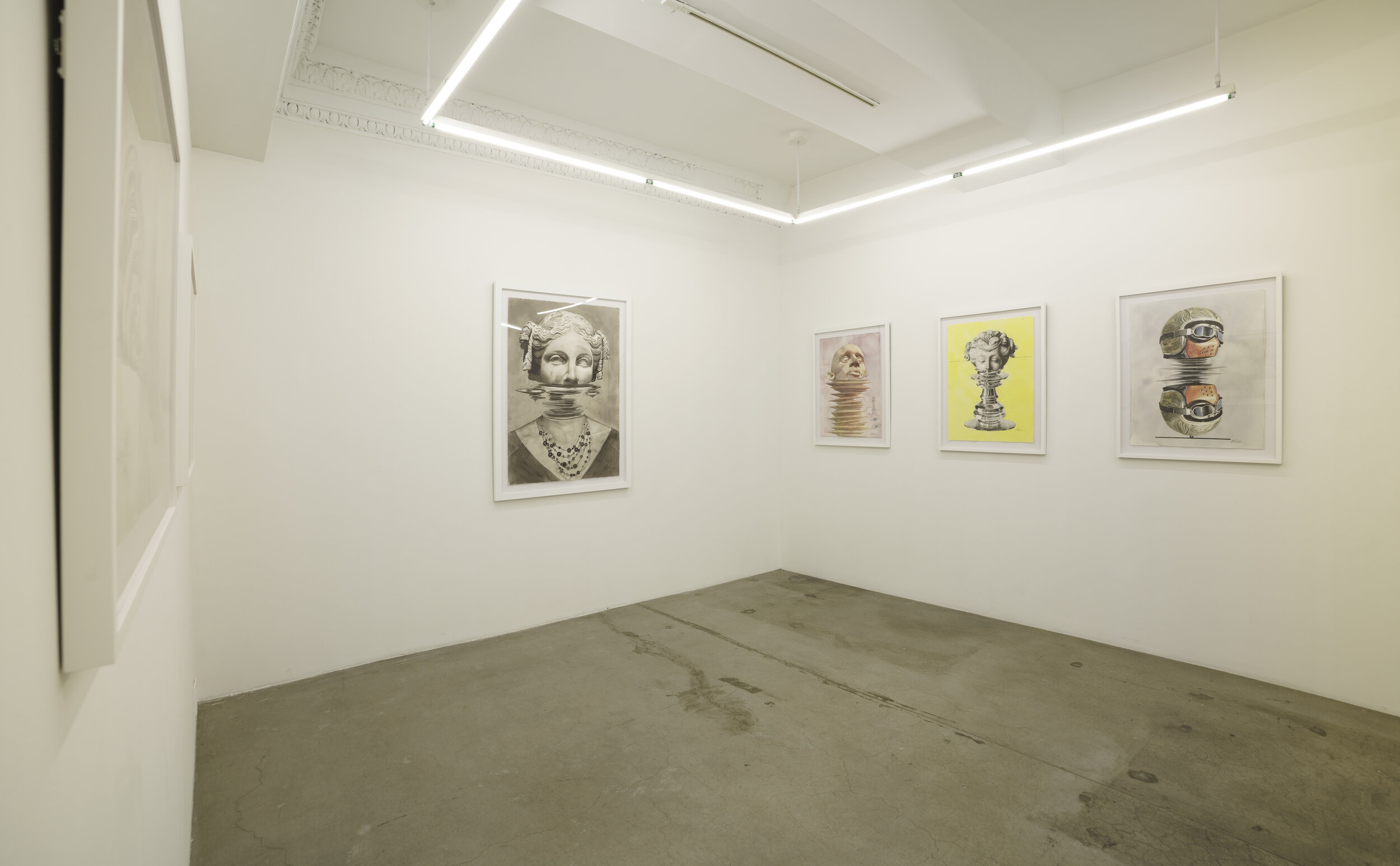
BRAVE NEW WORLD
New Works by Alain Pino
“Political language is designed to make lies sound truthful and murder respectable, and to give an appearance of solidity to pure wind.” George Orwell
“The whole future lies in uncertainty: live immediately.” Seneca
Alain Pino’s recent works address the complexities of modern life as he straddles the classicism of his early schooling with the challenges of contemporary life. As an observer and artist, his practice is grounded in technical artistic proficiency, coupled with a deep interest in technology and its role in our future. He addresses timely issues such as the financial markets, cryptocurrency, sonic attacks, AI, and the military conglomerate, while questioning our forefather’s role in our current state of affairs. Although the subjects sound loaded, they do not feel so under Alain’s gaze as there is a lightness and sense of humor that comes through due to his facile handling of the brush. His command of his artistic language and understanding of the world we live in have created a compelling and highly relatable body of work.
Laura Blanco | New York City
ALAIN PINO
Havana and Miami-based artist Alain Pino was born in 1974 in Camagüey, Cuba. Pino is a multi-disciplinary conceptual artist who deftly crosses artistic borders - painter, draftsman, printmaker, photographer and sculptor. He is a graduate of the Instituto Superior de Arte.
Pino is a co-founder, with Niels Moleiro and Mario Miguel González (Mayito), of the artist collective The Merger. He remained in the group for eight years, departing in 2017. During his time with The Merger, he was awarded the opportunity to further explore his varied disciplines while focusing on bridging conceptual and pop, without rejecting the academic. Prior to his work with The Merger, Pino enjoyed success as a solo artist, exhibiting throughout Cuba, the U.S., Canada, Europe and Latin America.
STATEMENT
My work is a reflection of social and political events that happen around me daily. I make use of the social and cultural patterns I am familiar with –I extract visuals from the news, the street, historic materials and other sources and mix them in search of the new meanings that come out of their interaction.
Portraits are a big portion of my work. I realize them in photography, painting and installation. They are full of contradictions. I not only create androgynous characters, but place them in paradoxical situations that I create by having them dialogue with certain objects. Formally my pieces are hybrid. I take advantage of the formal resources that different materials and genre offer. Escape (2002-present) is an ongoing reflection on the theme of migrating. In it I explore aesthetics, poses and actions that imply some sort of escape, without it being literal.
In the series El Tiempo Pasa (2006) (Time Goes By) I photograph women, to whom I have attached a shaving foam beards. Instead of depicting specific subjects, these portraits talk about the pass of time and the projections of future that are in play at every moment.
Zona de selección (AÑO) (Selection Zone) is a 26-feet-long installation where acrylic panels and aluminum pipes undulate as waves, crossing each other every certain distance thus mimicking the trajectory of the DNA. Photographs of different people with their mouth open, as if taking a breath of air, are printed on the plexiglass and are metal tubes pass through the mouths of those being portrayed. In this case, I wanted to reflect on the migration through the sea and on the process of “natural selection” that is implied within surviving this experience.
Alain Pino offers a very fresh look of his reality –the Cuba of the end of the nineties and the beginnings of the new century. When other artists choose to narrate what is going on around them, Pine focuses on the individual. The characters of his photographs are shady, strange –often androgynous and in situations or poses that are undefined and mysterious, as species that went through a metamorphosis and have evolved in order to deal with their new environment. By focusing on people instead of events, he calls attention to the social change that is taking place in the island. (Yuneikys Villalonga, marzo del 2006).






